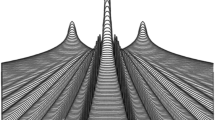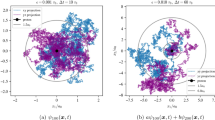Abstract
IN a recent note1 on the static interaction between nuclear particles, Dr. C. Møller and Prof. L. Rosenfeld describe the results of a canonical transformation which makes it possible to separate dynamic and static interactions, and they state: “The static interaction is in all cases exactly the same as that obtained as a first approximation in the perturbation method”. They referred to certain work done previously2 by me, and I wish to point out that the above statement does not correspond to my results. If this statement applies to the interaction between two Dirac electrons, this is only because in that case we have but one component of the field giving static effect, namely, the electrostatic potential. For nuclear interactions, the field must have at least two components (usually expressed as one complex field: the meson field). If one tries as before to separate each component into the static solution of the wave equation and the transformed field component, one finds that this transformation is no longer canonical. This is due to the fact that these static parts do not commute because they are formed with the aid of the non-commuting ‘isotopic spin matrices’ of the heavy particles.
Similar content being viewed by others
References
Møller and Rosenfeld, NATURE, 143, 241 (1939).
Stueckelberg, C.R., 207, 387 (1938); Phys. Rev., 54, 889 (1938).
Author information
Authors and Affiliations
Rights and permissions
About this article
Cite this article
STUECKELBERG, E. Theory of Mesons and Nuclear Forces. Nature 143, 560–561 (1939). https://doi.org/10.1038/143560c0
Issue Date:
DOI: https://doi.org/10.1038/143560c0
- Springer Nature Limited





